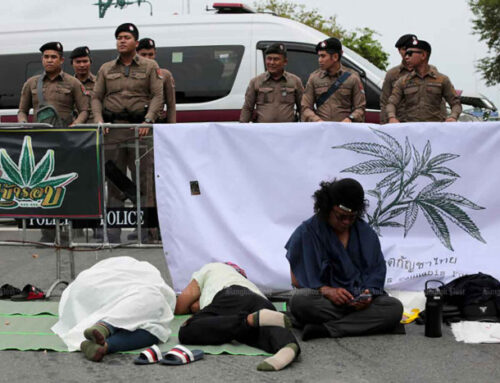Iran’s renewable revolution with solar-hydro synergy
July 6, 2025
Iran is preparing for a transformative shift in its energy landscape with a strategy aimed at expanding renewable energy capacity, combining the reliability of hydroelectric power with the growing potential of solar energy.
In a country long dependent on fossil fuels, the move to integrate solar power into the existing dam infrastructure signals a clear pivot towards a more sustainable energy future.
The government’s latest initiative, which envisions the construction of solar power plants adjacent to hydroelectric dams, takes advantage of Iran’s natural resources and existing infrastructure.
With a mix of innovative ideas and practical solutions, this project promises to improve grid stability, reduce carbon emissions, and help the country achieve its ambitious energy goals.
Iran’s strategy is built on a simple yet powerful concept: synergy. The government recently signed a Memorandum of Understanding (MoU) with the Iranian Renewable Energy and Electricity Efficiency Organization (SATBA) to build solar power plants at strategic dam sites across the country.
Officials emphasize that by combining solar with hydroelectric power, Iran can effectively integrate renewable sources into its energy mix while reducing dependence on fossil fuels.
The goal is to generate 500 megawatts of new solar capacity, a significant step towards achieving Iran’s broader renewable energy targets.
Given Iran’s high number of sunny days, solar power is uniquely positioned to provide a reliable and sustainable energy source for the country.
But perhaps the most forward-thinking aspect of this energy transition is the move towards floating solar power plants.
With land prices in urban centers rising sharply, the need for alternative locations for solar farms has never been more urgent. Iran, facing similar constraints, is turning to its extensive network of dams and reservoirs as potential sites for floating photovoltaic (PV) systems.
The country has already launched a pilot floating solar project at Mahabad Petrochemical Company, utilizing domestically developed floating structures. This initial success paves the way for larger-scale projects and exemplifies the country’s growing expertise in renewable energy.
The floating solar model eliminates the need for expensive land near population centers. These plants can be sited on reservoirs, reducing the need for costly transmission infrastructure and mitigating issues like dust accumulation, which hampers the efficiency of desert-based solar farms.
The environmental benefits of floating solar power are significant, particularly for a country like Iran, which faces both water scarcity and a harsh climate. By positioning solar panels on bodies of water, Iran can significantly reduce water evaporation from its reservoirs.
This not only helps conserve vital water resources but also improves the overall efficiency of the solar panels, as the cooling effect from the water can boost their performance by 5 to 10 percent.
From an economic perspective, floating solar can provide a more cost-effective solution to Iran’s growing energy demands. With its ability to increase efficiency, reduce water evaporation, and offer a more sustainable source of energy, floating solar could ultimately help reduce electricity production costs over time, contributing to the country’s long-term energy stability.
One of the most compelling aspects of this initiative is the potential synergy between solar power and hydroelectric energy.
Iran has a long history of hydropower generation, with the Iranian Water and Power Development Company responsible for over 70% of the country’s hydroelectric plants.
These plants have traditionally provided a reliable and steady source of energy. However, the development of new hydroelectric projects has slowed in recent years due to financial constraints and other challenges, chiefly drought.
By combining solar energy with hydroelectric power, Iran could reduce the intermittency issues that typically plague renewable energy sources.
Solar energy is generated during the day, while hydroelectric power can provide a steady flow of electricity at night. This complementary relationship could help stabilize the grid, ensure a more consistent power supply, and enhance the overall resilience of the energy system.
Moreover, during dry seasons when water levels in hydroelectric reservoirs are low, solar energy production could help offset the reduced output from hydroelectric plants.
Conversely, during rainy seasons, when solar energy generation is limited, hydroelectric plants could pick up the slack. This synergy could offer a more reliable energy mix and enhance Iran’s ability to meet electricity demand throughout the year.
Despite the promising potential, Iran’s renewable energy ambitions are not without challenges. The technical complexities of floating solar systems in fluctuating water levels present engineering hurdles.
Additionally, the financial costs of such projects are higher than land-based solar farms due to the need for specialized materials and installation processes.
Furthermore, while Iran is rich in natural resources, securing the necessary capital for large-scale renewable energy projects remains a significant challenge. Years of international sanctions and domestic financial pressures have limited Iran’s access to investment, which could delay the pace of development.
Nevertheless, the global success of floating solar systems—exemplified by large-scale projects in China, India, and South Korea—demonstrates the viability of this technology.
With rising land costs and increasing pressure to conserve water resources, floating solar is becoming a key part of the renewable energy solution worldwide.
In this context, Iran’s initiative to integrate floating solar into its renewable energy strategy places it at the forefront of an emerging trend. By capitalizing on its vast water resources and ample sunlight, Iran is well-positioned to make significant strides in both energy production and water conservation.
Search
RECENT PRESS RELEASES
Related Post



